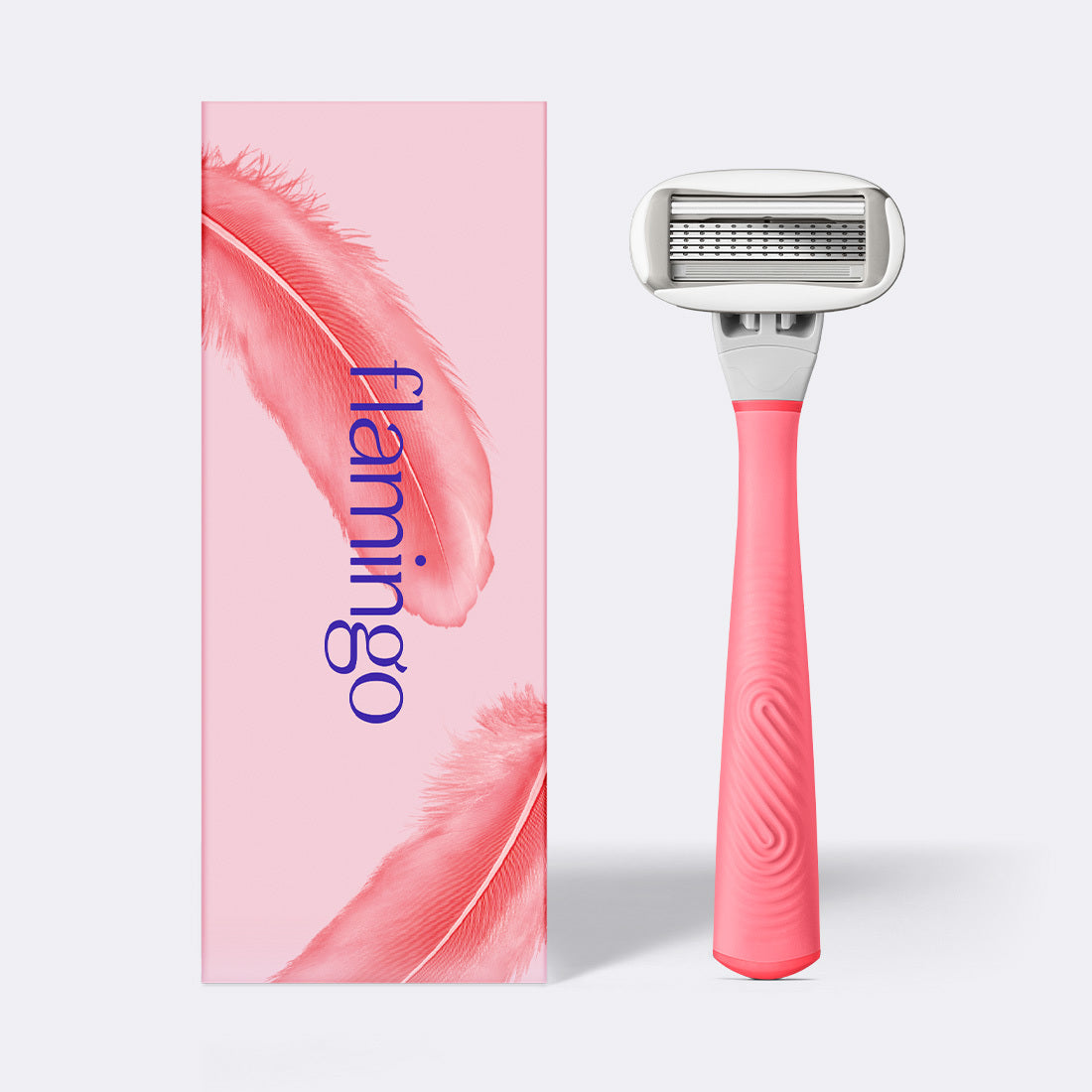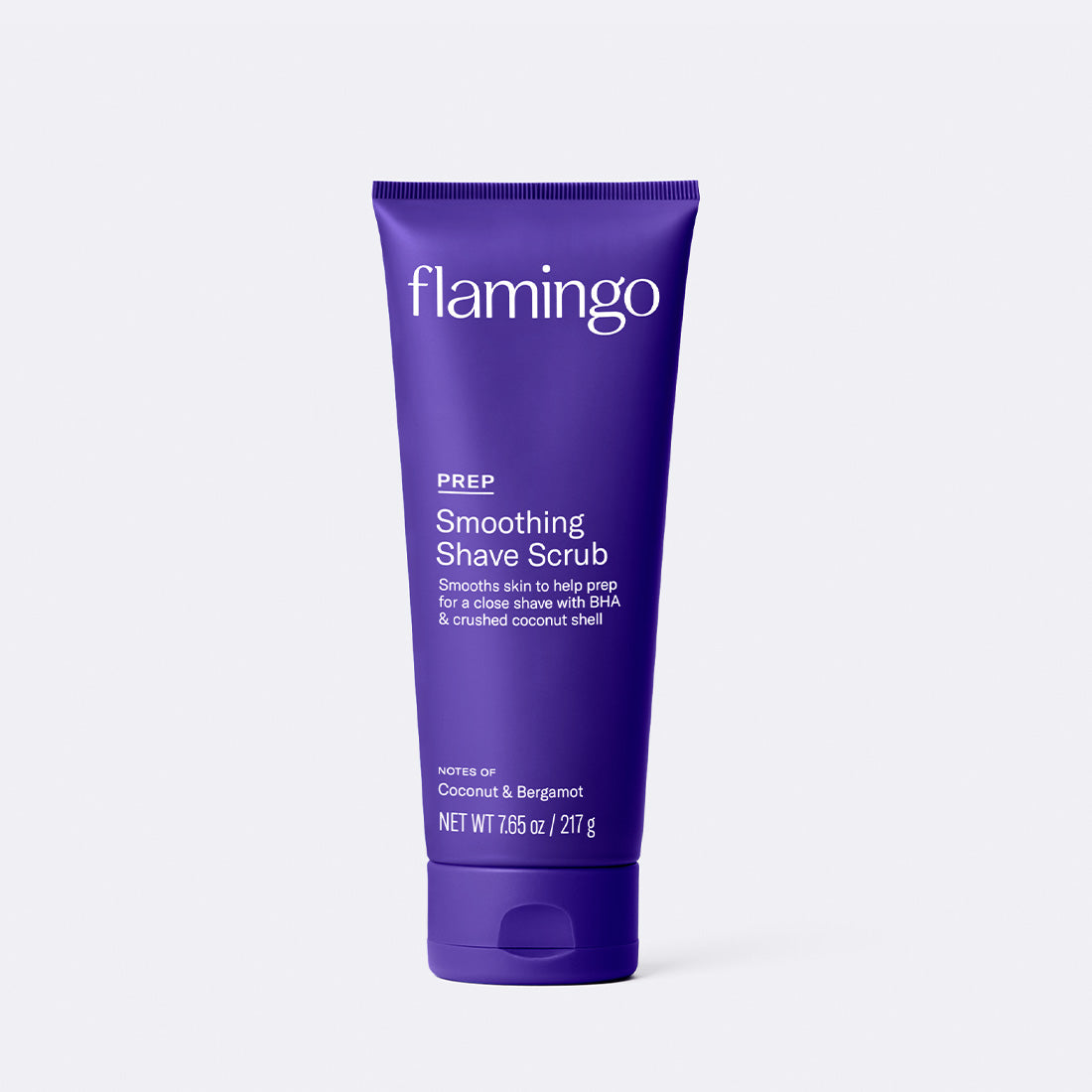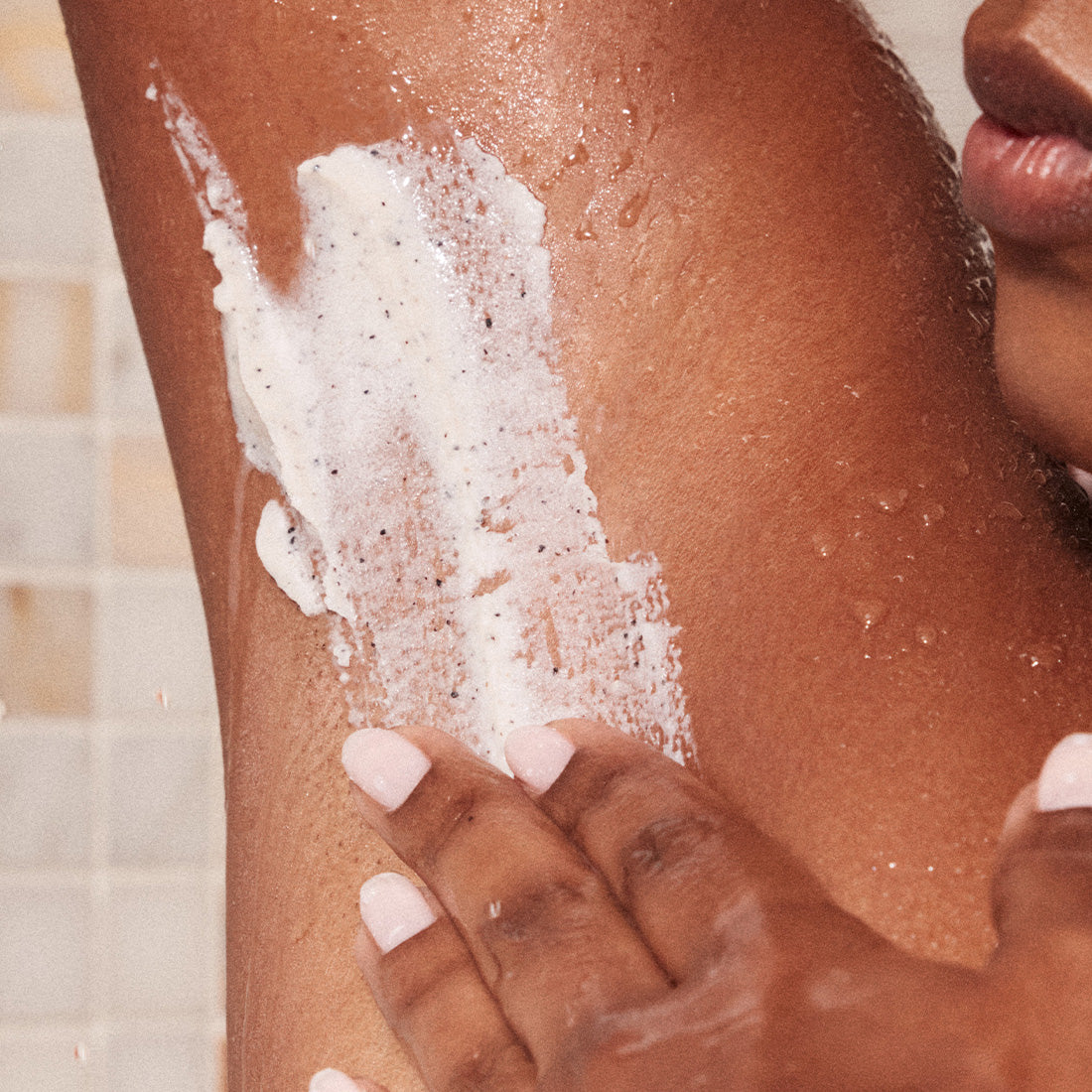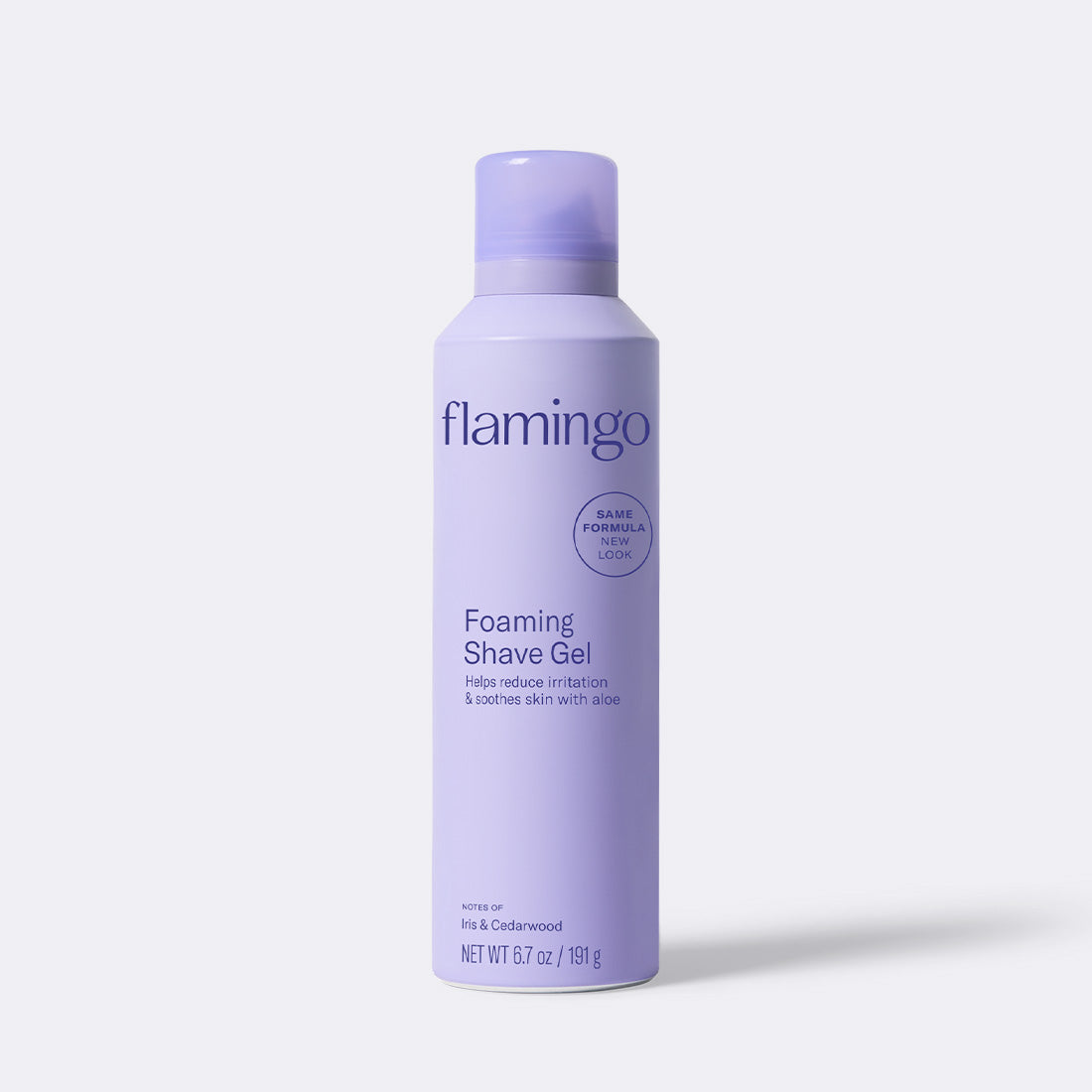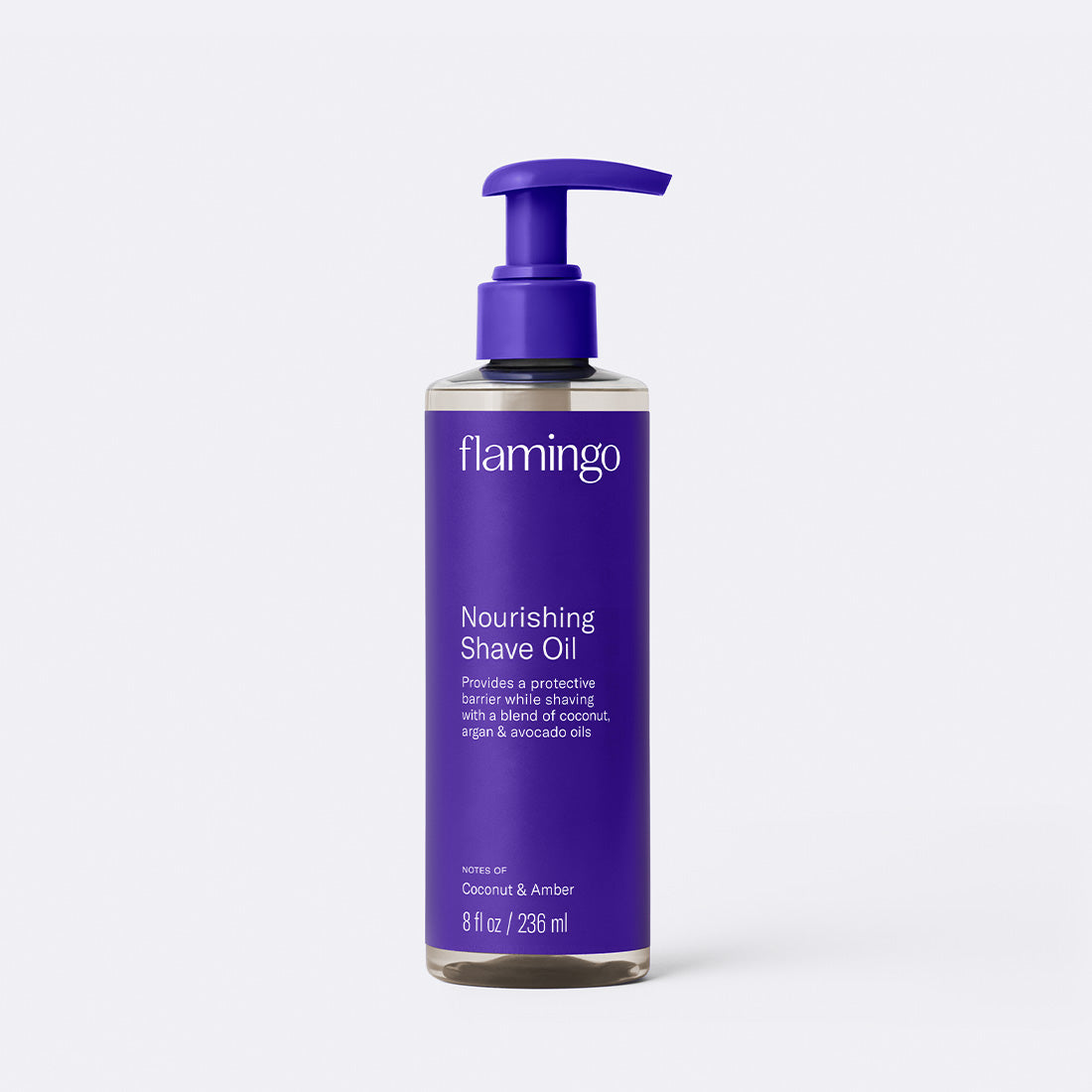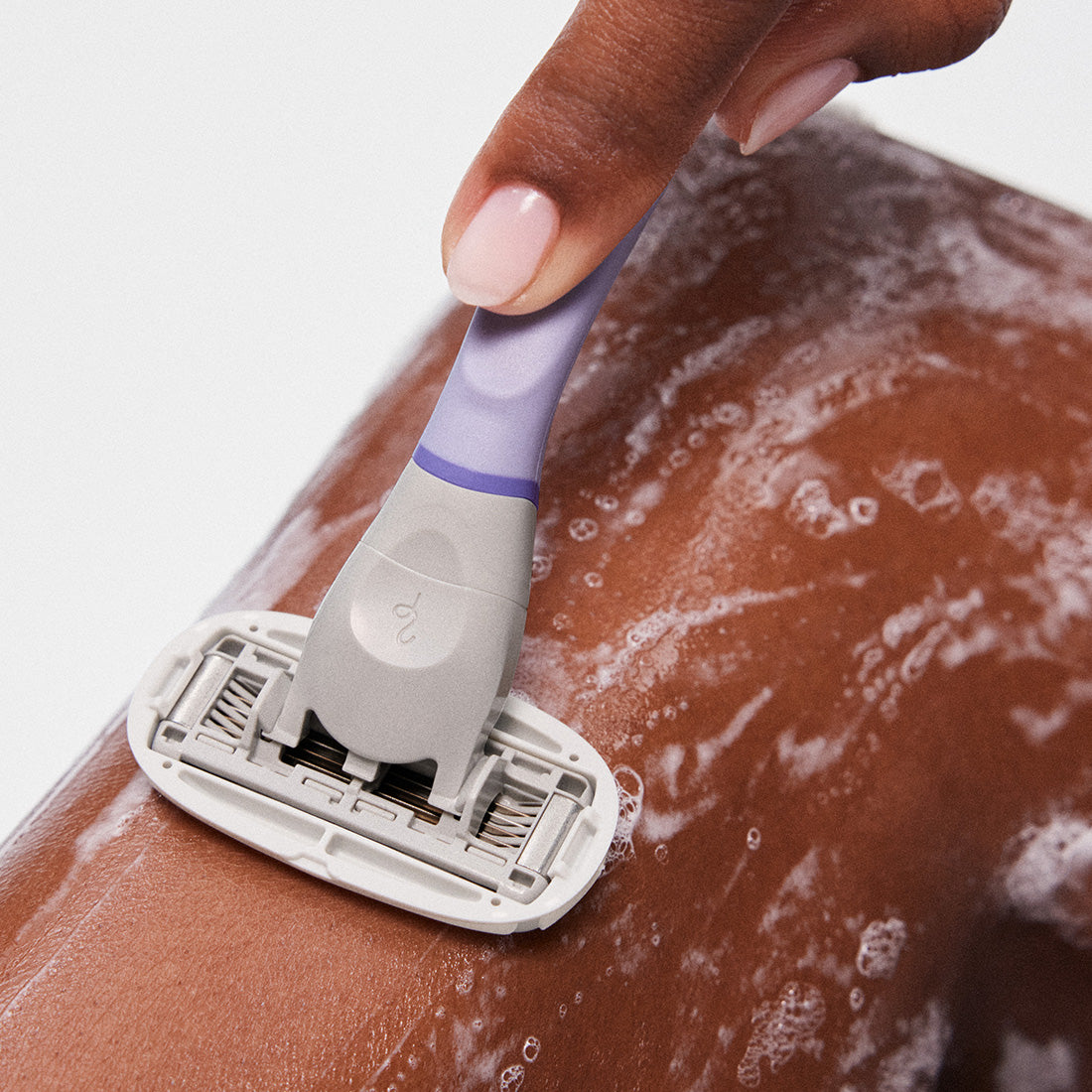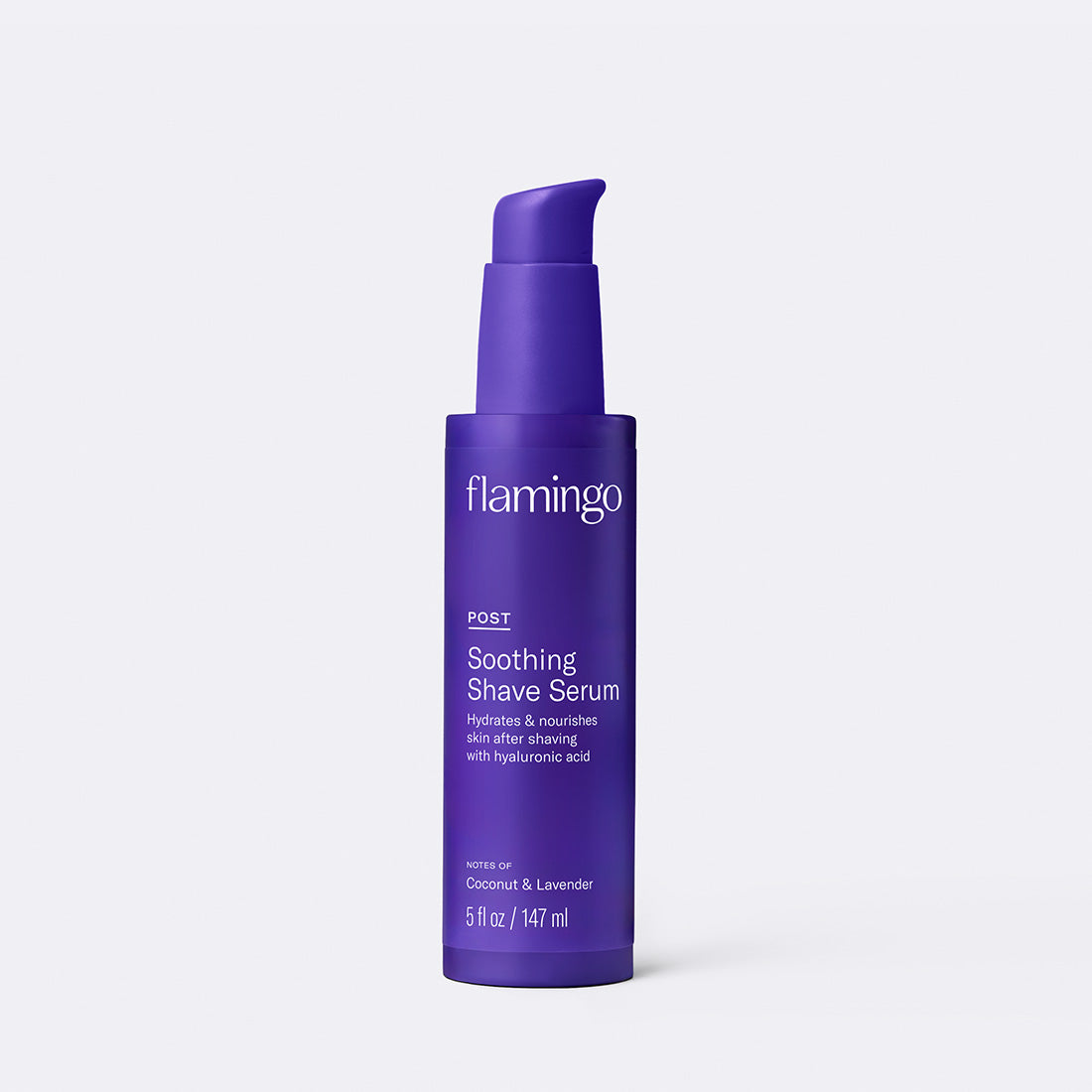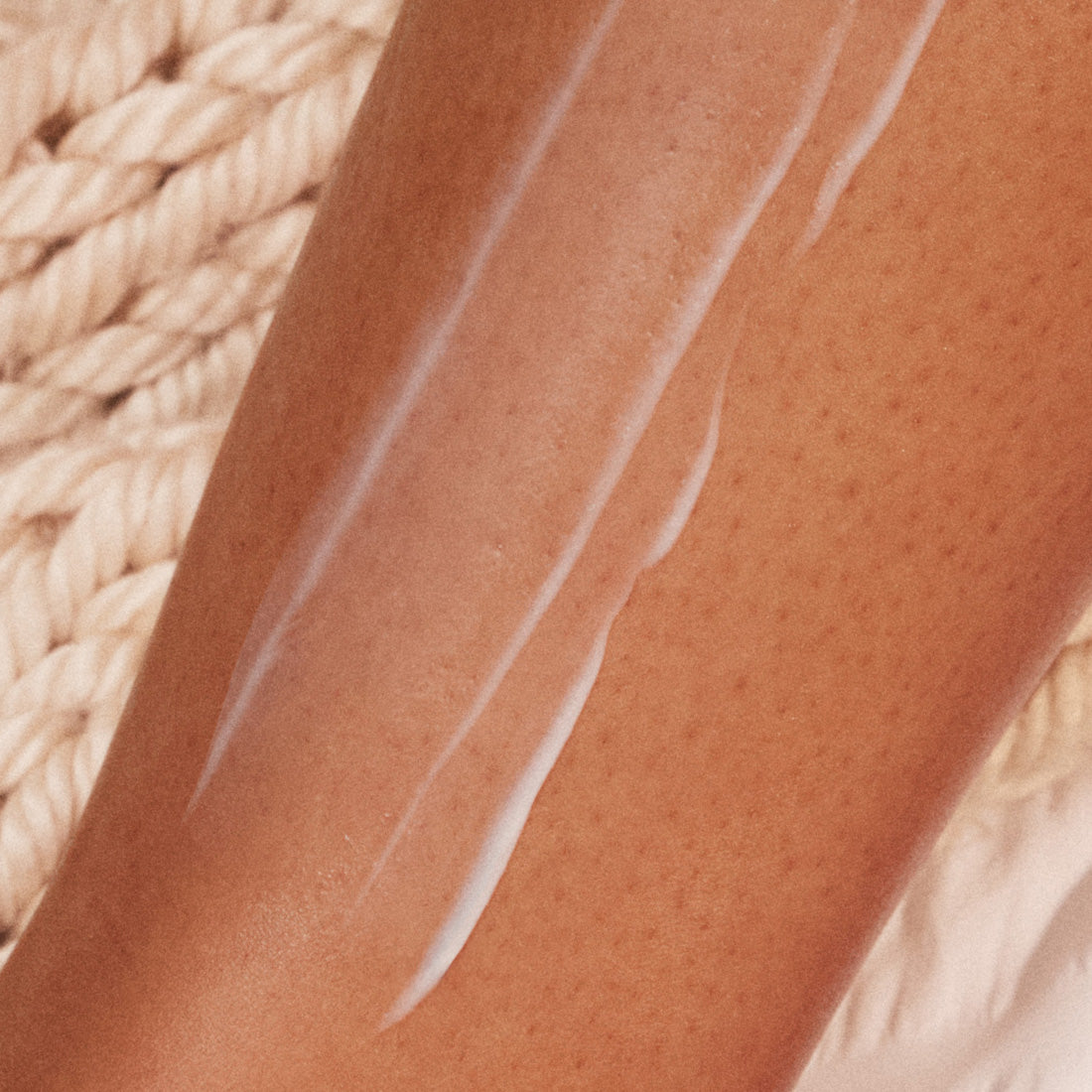IF YOU'RE LOOKING to learn how to shave your legs, you’ve come to the right place. As hair removal experts, we’ve put together this step-by-step guide to cover all the basics from prep to aftercare. Shaving your legs is easy enough, but if you don’t follow proper technique you can run into issues like razor burn, ingrown hairs, and dry skin. Don’t worry—we’ve got you covered with all the best tips to ensure you have a smooth, safe shave experience, whether you’re a beginner shaving for the first time or a seasoned pro.
Assemble Your Shaving Tools
-
Razor
-
Exfoliator
-
Shave Gel, Cream, or Oil
Choose the Right Razor for You
The amount of options for women’s razors can be overwhelming, so which one should you choose? There are pros and cons to all of them, so let’s dive into it.
-
Single-Blade Razors vs. Multi-Blade Razors
A single-blade razor, also known as a safety razor, features a single, sharp blade designed to cut hair at the surface of the skin without any lubrication strips. Single-blade razors can be good for sensitive skin because they can cause less friction than multiple blades. However, they have a very sharp edge and come with a learning curve. Without a lubrication strip, they don’t easily glide across skin unless they have help from lots of shave gel. It can take awhile to get the hang of shaving with a single blade and its likely that you can cut yourself in the learning process.
A multi-blade women’s razor usually features a cartridge with 3 to 5 blades and a water-activated lubrication strip to encourage glide. Typically, the first blade pulls the hair, the second and third cut the hair, and the fourth and fifth clean up any hair left behind. The lubrication strip helps the razor blades glide along large stretches of the body, like your leg or armpit. A multi-blade razor provides a close, comfortable shave, but the additional blades can slightly increase the chances of ingrown hairs and irritation, especially without proper shave prep.
-
Disposable vs. Reusable Razors
Disposable razors usually have one to five blades, and once those blades become dull you toss the entire razor in the trash. We recommend a reusable razor, i.e. a razor handle with detachable blade cartridges, since they usually feature higher quality handles than disposable razors, you can easily refill the blades when they become dull, and they’re overall less wasteful.
-
Electric vs. Manual Razors
An electric razor is a device that trims away body hair with little effort on your part. They can come with or without a cord, or be battery-operated or rechargeable. Electric razors can be versatile because you can usually use them to trim or shave, as well as shave wet or dry. However, they can be bulky, expensive, and inconvenient when you factor in the charging time or battery life. They can also require more passes to remove hair since the blades are not directly exposed, resulting in a less close shave.
A manual razor is usually faster than an electric razor and can give you a closer shave. Plus, they’re usually more affordable than electric razors. The only downside is that chances of irritation, nicks, and cuts are more likely with a manual razor, but this can be avoided through proper shave prep and technique.
Our Recommendation
For most women, a multi-blade reusable razor is best for shaving your legs. We recommend Flamingo’s Original Razor, which features 5 sharp blades, glide strips with aloe and shea butter, and a comfortable no-slip grip handle.
When to Replace Your Razor
For your best shave, always use a sharp razor blade. Dull blades can irritate skin, so we recommend changing your blades every 6 to 8 uses, or when you start to feel tugging or pulling of skin or hair when you shave. When in doubt, swap those blades out!
Choose Your Shave Products
-
Pre-Shave Exfoliators
Exfoliating before you shave can help to remove dead skin cells that could otherwise clog your razor blades or cause ingrown hairs. You can use a physical exfoliator, like a body scrub, or a chemical exfoliator, like a body wash that contains salicylic or glycolic acid (also known as BHAs and AHAs). To avoid irritating skin, exfoliate no more than two to three times a week.
We recommend Flamingo Smoothing Shave Prep Scrub, a gentle body scrub that’s safe for sensitive skin and made with a combination of chemical & physical exfoliants like BHA and crushed coconut shell.
-
Shaving Cream or Gel: Which is Better?
Using a shave gel or cream is important to help enhance your razor’s glide and reduce the friction that can cause irritation, razor burn, and bumps. Shave gel usually feels slick and cool, while shave cream has a more fluffy, creamy texture. Both are effective options, so it’s really up to your personal preference. Flamingo Foaming Shave Gel combines the best of both worlds: it’s a gel that transforms into a pillowy foam as you lather it onto your skin.
-
Another Option: Shave Oil
Shave oil is another way to add extra glide to your razor, plus it typically moisturizes your skin at the same time. It’s a great option if you have dry skin and are looking for ways to add extra hydration to your shave routine. Flamingo Nourishing Shave Gel adds a luxurious glide to your razor with a moisturizing blend of coconut, argan, & avocado oils that gives a protective barrier while shaving.
How to Shave Your Legs
Step 1: Cleanse & Hydrate
Wet shaving in a bath or shower is the ideal way to shave your legs. When your skin and hair are hydrated, they become easier to shave, which in turn helps avoid irritation. It can be tempting to shave on dry skin when you’re in a hurry, but that can increase the chances of irritation, bumps, and cuts. Slick, hydrated skin helps your razor glide along smoothly.
Wash your legs with a gentle soap or body wash to remove any buildup of dirt, oil, or dead skin that could potentially clog your razor blades or trap hair and encourage ingrowns. Then, soak your skin under warm water for a couple of minutes (you can do this while you wash your hair or go about other parts of your shower routine).
Step 2: Exfoliate
Gently exfoliate your legs using a body scrub or body wash with chemical exfoliants. To avoid irritating skin, exfoliate your legs no more than two to three times a week. We recommend using Flamingo Smoothing Shave Prep Scrub, a gentle body scrub that’s safe for sensitive skin and made with a combination of chemical & physical exfoliants.
Step 3: Lather Shave Gel, Cream, or Oil
Gently rub your preferred shave gel, cream, or oil on wet skin to lather. If it washes away while you shave, reapply as needed. Flamingo Foaming Shave Gel and Flamingo Nourishing Shave Gel are two great options to give your shave the extra glide it needs.
Step 4: Shave
With a steady hand, lightly shave your legs in the direction of hair growth to help minimize friction and potential irritation. If shaving in the direction of hair growth first doesn’t give you close enough results, apply more shave gel and carefully shave against the direction of hair growth. Be mindful that shaving against the direction of hair growth can be more disruptive to your skin, so the fewer razor strokes, the less potential for irritation.
You don’t need to apply excess pressure. A fresh, sharp blade will do most of the work for you. Be careful while shaving around bonier areas of your leg, like your ankle and knees. Take your time! Don’t rush while shaving to help avoid nicks and cuts.
After every razor stroke, rinse your blades to wash away shave gel residue and body hair.
Step 5: Rinse
Rinse your legs with cool water to remove any remaining shave gel and soothe skin. If you’ve noticed you’ve missed a spot, reapply shave gel to that area and shave again.
Post-Shave Care
Step 1: Pat Skin Dry
Gently pat your legs dry with a clean towel. Avoid rubbing, which can irritate your freshly shaven skin.
Step 2: Apply a Soothing Moisturizer
Once you’ve dried off, apply a moisturizing product to help hydrate and comfort skin after shaving. Avoid products with alcohol, which can be drying. Flamingo Soothing Post Shave Serum is a great option that’s dermatologist tested and safe for sensitive skin. It contains hyaluronic acid to hydrate skin, calming ginger root extract to help reduce the appearance of post-shave redness, and coconut oil to leave skin soft and glowing.
Step 3: Treat Razor Burn & Ingrown Hairs (If Needed)
If you’ve followed proper shaving technique, it’s unlikely you’ll experience razor burn or ingrown hairs. However, these things are totally normal and there are lots of solutions to help ease your discomfort.
Razor Burn Treatment
For mild razor burn, you can apply a number of at-home remedies, like aloe vera gel or a cold compress. You can also apply hydrocortisone cream, which contains mild, anti-inflammatory steroids to help skin heal faster and reduce itching and swelling.
Ingrown Hair Treatment
Avoid picking or touching the ingrown, which can cause further irritation or even infection. While ingrown hairs can be annoying, they usually go away on their own after a few days. Using Flamingo Ingrown Spot Treatment can help with the process. It’s a dermatologist and gynecologist tested, targeted solution to soothe visible redness and gently exfoliate ingrown hairs with white willow bark, lactic acid, and bisabolol.
When to Seek Help
Most razor burn and ingrown hairs clear up on their own or with the aid of over-the-counter remedies, but if you experience an ingrown hair or razor burn that is extremely painful, getting worse, and the skin around it is hot or swollen, or you even have a high temperature and feel unwell, visit a doctor.
How Often Should You Shave Your Legs?
There’s no set rule for how often you should shave your legs. It’s really up to your preferences and factors like how fast your hair grows or how sensitive your skin feels. If you prefer smooth skin all the time, we generally recommend shaving every two to three days so that your skin has time to recover in between shaves.
Making Your Smooth Legs Last
To extend the time in between shaves and maintain your smooth legs for a longer period, your best bet is to aim for a really close shave from the start. The best way to do this is follow our above recommendations: exfoliate before shaving and use a sharp razor blade.
Common Shaving Mistakes (and How to Avoid Them)
-
Using a Dull Razor
To safely shave your legs, always use a sharp razor blade. Dull blades can irritate skin, so we recommend changing your blades every 6 to 8 uses, or when you start to feel tugging or pulling of skin or hair when you shave. When in doubt, swap those blades out!
-
Skipping Exfoliation
Exfoliating is an easy step to help remove dead skin and discourage ingrowns. You can use a body scrub or body wash with chemical exfoliants, or even just rub your legs with a washcloth or loofah if you’re in a pinch.
-
Shaving On Dry Skin
It can be tempting to shave on dry skin when you’re in a hurry, but this is a recipe for an irritated, bumpy disaster. Hydrating your skin and hair makes them much easier to shave.
-
Applying Too Much (or Too Little) Shave Gel
Apply shave gel in an even layer. Don't go too thick, as this can clog your razor blades, but make sure you've got full coverage of the area you’re shaving.
-
Applying Too Much Pressure
If you find yourself having to apply a lot of pressure to get a close shave, that’s usually a sign that it’s time to change your blades. Too much pressure can also lead to nicks and cuts. A fresh, sharp blade should do most of the work for you.
-
Shaving Too Quickly
Take your time while shaving your legs. Rushing can lead to nicks and cuts. Be especially careful while shaving around bonier areas of your leg, like your ankle and knees.
Other Leg Hair Removal Methods
Shaving isn’t the only way to get smooth legs. There are lots of hair removal options and the one you choose is really up to your personal preferences, like how sensitive your skin is and how much time and resources you have.
-
Waxing
Shaving removes the top part of the hair that’s grown through the top layer of your skin, while waxing removes the whole hair from the root. The main pro of waxing is that it keeps you smoother for longer, since the entire hair has to regrow before you start to feel and see it again. The con of waxing is that it can feel painful, especially on sensitive skin.
You can use soft wax, hard wax, or wax strips to remove leg hair, either at home or by visiting a professional. Getting waxed by a professional esthetician can help avoid irritation, but can also be expensive. Flamingo Body Wax Kit features no-heat waxing strips for precise hair removal at home, plus post-wax cloths to remove residue and soothe skin.
-
Laser Hair Removal
Laser hair removal uses laser light to destroy hair follicles and permanently reduce hair growth. If you’re someone who likes smooth legs all year long, laser hair removal can make your life a lot easier. The downside of laser hair removal is that it can cost hundreds of dollars per session, with permanent hair removal usually requiring multiple sessions and future maintenance treatments. Plus, laser hair removal is not effective on all types of hair and the lasering process can cause extreme discomfort.
-
Epilators
An epilator is an electric device that works sort of like a trimmer and wax strip combined. You move the epilator along your legs and it mechanically pulls out hairs like a wax strip would, but does not remove any skin cells. The main pro of using an epilator is that it keeps you smoother for longer, since the entire hair has to regrow before you start to feel and see it again. But, like waxing, removing hair from the root can feel painful, especially on sensitive skin.
-
Hair Removal Creams
Hair removal creams, also known as depilatory creams, are a virtually pain-free method to remove body hair. You usually apply the cream to your skin in a thick layer, leave it on for a few minutes, then wipe it away to reveal smooth, hairless skin. It’s (almost) like magic!
The main active ingredients in hair removal creams are usually thioglycolic acid and urea. Along with other ingredients, they work to break down the keratin protein in hair and create that magic dissolving effect. Because of the powerful nature of these ingredients, they can sometimes cause irritation and redness. Before using a depilatory cream, you should always patch test. Flamingo Body Hair Removal Cream features a gentle, safe for sensitive formula that keeps your legs smooth for up to 7 days.
Conclusion
The best way to shave your legs for smooth results is to take your time and follow proper shaving techniques:
-
Always use a sharp razor and pair it with a shave gel, cream, or oil
-
Hydrate, cleanse, and exfoliate your legs before shaving
-
Carefully shave with light strokes in the direction of hair growth
-
Rinse and pat skin dry after shaving with a clean towel
-
Moisturize your legs after shaving to soothe and comfort skin
Recommended Products
Flamingo Smoothing Shave Prep Scrub
Flamingo Soothing Post Shave Serum
FAQs
How often should I shave my legs to keep them smooth?
We recommend shaving your legs two to three times a week to keep them smooth while avoiding irritation.
Is it better to shave with or against the grain for legs?
It’s best to shave your legs in the direction of hair growth to help minimize friction and potential irritation. If shaving with the grain (in the direction of hair growth) doesn’t give you close enough results, apply more shave gel and carefully shave against the grain (the direction of hair growth).
What are the best razors for sensitive skin?
Though it might seem counterintuitive, the best razor for sensitive skin is a sharp razor. A sharp razor is able to remove hair with little pressure on the skin. Dull blades can irritate skin by tugging and pulling while you shave.
How can I prevent razor burn and bumps after shaving?
The best way to prevent razor burn and bumps after shaving is to prep your skin before you shave. This is why we recommended cleansing, exfoliating, and applying shave gel beforehand.
Can I shave my legs without using shaving cream or gel?
In general, we recommend always shaving with shaving cream or gel. The only exception is when you’re using an advanced moisture razor, like Flamingo Moisture Plus, which features extra lubrication from moisture bars enriched with aloe, coconut, and shea butter.
Does shaving make leg hair grow back thicker?
No, shaving does not make leg hair grow back thicker or change how fast it grows. This is a common myth! Shaving can give the appearance of thicker hair because it gives the hair a blunt tip. The tip can feel coarse or stubbly while it grows up, but this subsides as the hair continues to grow.


